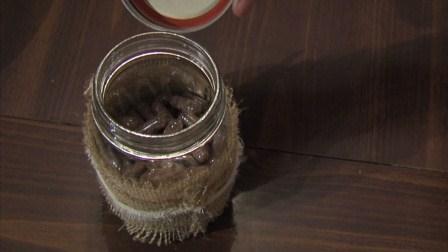
The growing phenomenon of mothers eating their own placentas seems to have caused a baby to be infected with group B streptococcus, according to a new report detailing the case that was published in the Centers for Disease Control and Prevention's Morbidity and Mortality Weekly Report.
Shortly after the baby was born last fall, he was found to have a group B streptococcus infection. Group B streptococcus is a bacterium normally found in and on our bodies, but can cause severe infections and illnesses in newborns, including sepsis, pneumonia and meningitis. Usually, when a baby gets a group B strep infection, it was passed by the mother during birth.
After being fully treated for the group B strep infection, the baby in the case study was released from the hospital, but readmitted to another hospital five days later. The baby again tested positive for a group B strep infection, though recurring infections are unusual, said, Dr. Genevieve Buser, lead author of the report and one of the treating physicians.
Buser, who is an infectious disease and pediatrics specialist in Portland, Oregon, realized along with her colleagues, that placenta pills may have played a role in the group B strep infection.
"We were concerned because the mother's breast milk had been tested, and it was negative for group B strep. So we were just trying to understand why this child would have two infections in a row," said Buser. "And when we discovered that the placenta had been encapsulated, we asked to test the dried placenta inside the capsules and that came back positive for group B strep."
In fact, when the placenta capsules, along with blood samples from the baby's two group B strep infections, were sent to the CDC for testing, it was found that all three samples were almost identical. This led the doctors to believe that the placenta pills were likely responsible for the infection -- though they could not definitively rule out that the infection could have come from another of the baby's family members.
The purported benefits of eating placentas
The practice of placenta consumption, or placentophagy, has been promoted in recent years by many celebrity moms, including Kim Kardashian, January Jones and Alicia Silverstone.
Not all mothers choose to consume their placentas through pills. Instead, some choose to eat them raw, blended in smoothies or cut in strips, straight out of the freezer. But, the vast majority of women eat their placentas cooked or encapsulated, said Daniel Benyshek, professor of medical anthropology at the University of Nevada, Las Vegas.
Improved mood, increased energy levels and enhanced recovery from pregnancy, are a few of the motivations mothers cite for eating their placentas, Benyshek said. Other purported benefits include increased breast milk production, reduced iron deficiency and that it's a natural behavior -- thousands of other mammal species do it.
"Of course we have very little data on the physiological effects in humans for consuming placenta," said Benyshek. "What we're left with is self-reports, although those are important, they don't meet the standards of typical clinical trial studies."
Benyshek, who is one of the few researchers in the US studying placentophagy, said that though there have been reports of placenta consumption having no actual benefits, more studies need to be done.
"The bottom-line is we just have very few studies that assess its benefits, lack of benefits or its risks," said Benyshek, who was not associated with this report. "There haven't been any studies saying there are benefits, but there really aren't any clinical studies to point to, to say there are risks. This latest CDC report is one of the very first in the literature to point out any potential risks."
Safety and regulation of placenta preparation
Currently, no standards are established for the consumption of placentas, and the practice is not regulated by the US Food and Drug Administration. Still, there are numerous companies and, what it's termed in the community as "placenta arts specialists," across the country that offer to encapsulate placentas.
The placenta pill processing company in this case was not identified. However, according to the CDC, the company website said placentas are prepared by being cleaned, sliced and dehydrated at a range of 115 to 160 degrees Fahrenheit. It's then ground up, formed into pills and stored at room temperature. The mother in the case study had been consuming two placenta pills, three times daily.
The CDC hypothesized that it was likely that the placenta was not heated at a high enough temperature to kill the group B streptococcus bacteria that was found in the pills.
The Association of Placenta Preparation Arts, a group for placenta preparers, has issued a set of standards they believe all specialists should follow. The standards, including the temperature at which the placenta is processed, were not listed on the organization's website, though they do recommend both food safety and bloodborne pathogens safety training for individuals who prepare the pills.
On Friday, the Association published a blog post addressing the CDC case study. The group maintains their stance that placenta capsules are safe for consumption and will likely not make babies sick.
"A well-trained placenta arts specialist will make sure that your placenta is prepared safely for consumption, unfortunately, it seems that this specialist may not have done so. A maternal or infant infection at or immediately after delivery indicates that an active infection was present. The mother should have been counseled against encapsulation initially."
Though some mothers and placenta preparation experts say more nutrients can be extracted if the placenta is eaten raw, Benyshek says placentas should be eaten only if they are cooked under appropriate food safety guidelines.
Though the CDC report concludes that "placenta capsule ingestion should be avoided" and mother's should be aware of the potential risk, Buser clarified she is not necessarily recommending against placenta encapsulation.
"What we can say at this moment is that the decision is up to each mother. But we do want mothers and medical providers to be aware that there is a potential infectious risk," said Buser "In cases where there is a known communicable disease, or any sign of infection at birth, that could potentially lead to the placenta containing that bacteria, which would then be ingested, and could pass to the baby."
Source: CNN
http://edition.cnn.com/2017/07/02/health/placenta-pills-infant-strep-infection/index.html
 FR
FR EN
EN AR
AR








